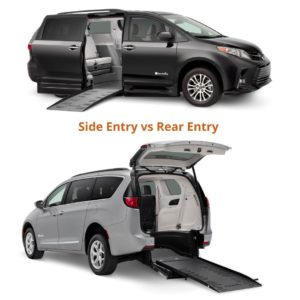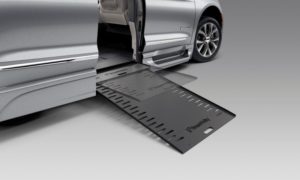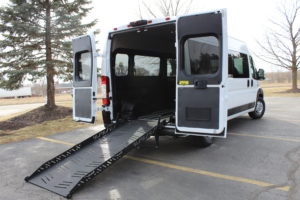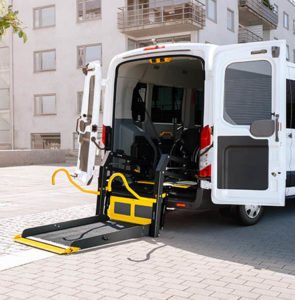
YOUR GUIDE TO BUYING A WHEELCHAIR VAN
Buying a wheelchair van is a daunting task because there are a lot of options. It can be confusing, and it’s easy to get lost in the weeds. But remember: You are not alone. That’s why we’ve put together this guide for you!
In this guide, we will walk you through everything from how much a wheelchair-accessible van costs to what kinds of features are available, so that when you’re ready to buy wheelchair van, you’ll be equipped with all the knowledge you need.
We hope this guide helps you make an informed decision about what kind of vehicle will best suit your needs as well as your budget. Without further ado, let’s get you started with the process of buying the best wheelchair-accessible van for you.
ASK RIGHT QUESTIONS
Before beginning your search for the right wheelchair-accessible van, understand your needs. Ask the following questions to know what will work for you and what will not:
1. WHO WILL BE DRIVING?
If you are a wheelchair user, will you be driving the vehicle too? If so, look for a van with a side entrance so you may utilize a transfer seat to get into the driving position. And in this case, you’ll also have to identify the adaptive aids you will need to drive safely.
If not, save some money and go for a less-expensive rear-entry van.
2. WHAT ARE THE DIMENSIONS OF YOUR WHEELCHAIR?
It will be easier for you to decide whether a vehicle fits your needs if you know your wheelchair’s dimensions. After all, there’s no reason to buy a wheelchair van that can’t get your wheelchair into.
For accurate measurements, physically place yourself in the wheelchair because if you are sitting in the wheelchair while entering the van, you must be able to get through the door without bumping your head. It may seem obvious, but it is the most vital issue people face when finding the right wheelchair van.
3. HOW MANY PEOPLE NEED TO BE TRANSPORTED IN THE VAN AND WHERE WILL IT BE STORED?
You must know your ideal seating capacity to determine the best wheelchair-accessible van for yourself and your family. Remember, it’s only possible to fit five people in an eight-passenger minivan if the middle seat is removed to fit a wheelchair.
Also, it is vital to consider where you will park your van. For example, you won’t be able to use a side-entry ramp in a narrow garage or a rear-entry ramp if the back of your van sits right against the garage door.
UNDERSTANDING DIFFERENT WHEELCHAIR VAN CONVERSIONS
There are various wheelchair van conversion types to consider when deciding on the best mobility option for you. Let’s take a look at the most popular conversion styles to help you buy the right wheelchair van.
SIDE-ENTRY VS. REAR-ENTRY
One of the most significant considerations when choosing a wheelchair-accessible van is side-entry versus rear-entry. Your decision will influence where a wheelchair can be placed, your capacity to accommodate extra passengers, and your parking alternatives.
Side-entry enables wheelchair users to enter the van from the side and easily access either the driver’s seat or front passenger area. But you must park in a van-accessible handicapped parking area with enough space beside the van to deploy the ramp or lift for entry and exit.
Rear entry vans are less expensive. They tend to be larger than side-entry vans since they have more room inside, so you can fit other passengers inside with you while still having plenty of space left over. And you can park them in any parking space.
IN-FLOOR VS. FOLD RAMPS
When you’re looking at a wheelchair van, it’s important to consider how accessible it is. This includes the ramp on which you’ll be entering and exiting your vehicle.
Most wheelchair vans come with in-floor ramps or fold-up ramps. In-floor ramp fits into a pocket beneath the vehicle’s floor. When it is not in use, it takes up no internal space- allowing non-wheelchair passengers to enter and depart the car without the ramp getting in the way.
The fold-out ramp is the most popular type of conversion utilized today. As the name implies, a fold-up ramp folds in half and is stored upright next to the side passenger door. They are often less costly and easier to maintain, with a lower ramp angle.
In-floor ramps are said to bring dust and dirt into the middle chassis, but we don’t find this to be the case. The low profile nature of the in-floor ramp makes it ideal. Additionally, if ambulatory passengers want to enter the vehicle on the side with the ramp, they can easily do it where a fold out ramp will block passengers from entering unless the ramp is deployed.
RAMPS VS. LIFTS
Depending on the vehicle you choose you will either have a ramp or a lift. Ramps are overall more convenient and less prone to malfunction. They can be found on all minivan applications and also on some large wheelchair accessible vehicles, too. Ramps have been tested over thousands of cycles and servicing them at a mobility dealer is easy.
Wheelchair lifts can be found on full size wheelchair accessible vehicles. Vehicles like the full size Ford Transit, Mercedes Sprinter and Dodge Promaster utilize lifts. Also, public buses, airport shuttles and old raised roof conversion vans use lifts. Lifts are versatile, can lift 800 – 1000 pounds, and are very wide so they can accommodate many wheelchair types. They do require regular maintenance and if a part malfunctions while in use, it can be very unsafe.
The choice of lift versus ramp ultimately comes down to the type of vehicle you will be buying.
BUYING ADVICE
After you have identified your needs and narrowed down your options, it’s time to start van shopping. But when you start looking for a wheelchair-accessible van, you may be surprised by how expensive it can be.
Does that mean that buying a wheelchair van is out of your budget? It doesn’t have to be. Here are some ways to make the budgeting and buying process easier:
SET YOUR BUDGET AND STICK TO IT
Make sure you know how much money you have available before you start looking for a wheelchair van. This way, you won’t get carried away by the first one that catches your eye or get tricked into buying something more expensive than what you can afford. The last thing you want is to fall in love with an expensive wheelchair van that doesn’t fit your budget!
CONSIDER A USED WHEELCHAIR VAN
Many clients choose to acquire second hand wheelchair vans and mobility devices. Others anticipate a low-use or short-term requirement, which allows them to be more forgiving of a car with some age and/or miles on it. The selection of secondhand accessible vehicles we have available is extensive.
If you are flexible, then you have a high chance of getting the perfect used wheelchair van that fits your needs and budget. To get the best used wheelchair van for your money, check out the used inventory at Clock Mobility.
SHOP FROM AN AUTHORIZED DEALER
Purchasing a wheelchair van is a significant investment, so make sure you buy it from an accredited dealer. The best way to do this is to make sure that whoever you buy from is certified by the National Mobility Equipment Dealers Association (NMEDA). This will ensure that your vehicle meets all federal safety regulations and is eligible for insurance coverage.
Clock Mobility, for instance, is an NMEDA-certified dealer of Braunability and VMI, the two leading manufacturers of wheelchair-accessible vans.
Don’t forget to get references before you buy. Ask other customers about their experiences with your potential dealer. You can also visit websites like Yelp to read reviews of local dealerships and compare them side by side.
ALL SET TO BUY
You now have all the information necessary to make an informed decision about which wheelchair-accessible vehicle is right for you. We at Clock Mobility have been offering a wide range of new, used, and converted handicap vans for over thirty years now. If you have been considering purchasing a new wheelchair van, feel free to contact us with any questions. We would love to be of any assistance in your buying process.





